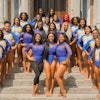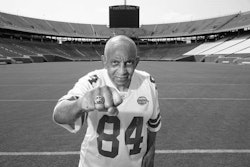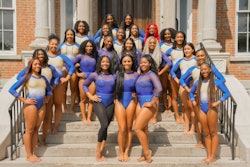When NCAA’s Division I bowed to increasing pressure last year to address lagging academic performance among student-athletes, its decision to raise the minimum academic requirements to qualify for intercollegiate competition stirred a backlash among officials at many HBCUs.
“It will kill us,” one HBCU president said in an off-the-record interview, asserting her school would be forced to cut a number of its best football and basketball athletes because they were academic underperformers. The new rules would also lessen the likelihood some rising athletes who finish high school academically underprepared could qualify.
The NCAA decision put the HBCU leaders in a bind.
Openly opposing the higher standards would send a message that HBCUs are putting athletic performance over academic performance. After all, the reason for going to college is ostensibly to earn a college degree that will prepare a person for a lifetime of employability.
By the same token, embracing the higher academic standards would force institutions to make some tough decisions in the case of academic underperformers whose athletic achievements could carry a school to lucrative, high-profile postseason tournaments.
“I’m for the increased standards, but I’ve indicated we need more money to hire counselors and increase technology for our student-athletes,” says Dr. William Harvey, president of Hampton University and a member of the Division I board of directors.
Harvey says NCAA leaders have promised more money for enhancing “the whole effort of academic support,” and he is optimistic they will make good on the promise.
A compromise of sorts may be evolving, as the NCAA signals it is willing to flex the edges of its new thrust rather than retreat in the face of aggressive public campaigns for more focus and emphasis on academic performance.
Early this spring, Division I directors revisited their 2011 decision and approved new rules that give high school students (those who are in the eighth grade this spring) a full four years to take the courses and get the grades they need to qualify for NCAA competition upon entering college after high school graduation. It did so by simply adding a year to the timetable for academic compliance with its new higher standards.
The Division I directors also decided to give what it calls “limited resource institutions,” a class of about 45 schools including all Division I HBCUs, more time to comply with its new Academic Progress Rates (APR), the complicated formula that sets minimum academic achievement requirements for teams to qualify for post-season competition. As the requirements stand, few HBCUs would qualify for post-season competition. The more flexible timetable takes effect starting with the 2012-2013 school year.
This summer, Division I is expected to embrace recommendations from its staff and several working committees to put money into efforts to boost the academic performance of student-athletes at HBCUs and other “limited-resource” institutions that claim they need help with money to hire tutors and purchase computers and other academic training equipment.
The Division I Executive Committee will receive a recommendation from its finance committee and staff to double to nearly $2 million its supplemental fund to support academic enhancements.
The executive committee will also be asked to approve a $5 million, three-year matching grant program to explore what kind of academic enhancement programs work. Eligible schools would have to apply for grants that could go as high as $300,000 a year under the proposal. No Bowl Championship schools could qualify even if they have APR problems, as the NCAA considers them financially able to invest in academic enhancements on their own.
“Everyone wants to learn what works,” said Kevin Lennon, vice president of member services at the NCAA, referring to the proposed grant program. Best practices will be picked up by other schools, he said, helping all “limited-resource” institutions speed up their abilities to meet increasingly tougher NCAA academic requirements.
The NCAA’s Division I made more than $450 million off its 2010-2011 season (funds generated from radio and telecast programming payments, game ticket sales and other March Madness games sales revenue), the most recent revenue season for which financial results have been published. About 60 percent of the funds are distributed to Division I conferences and member institutions, according to the NCAA, with no restrictions on how the funds are to be used.
Athletic directors at half a dozen HBCUs contacted to discuss the recent Division I board actions and their concerns did not respond to inquiries seeking their opinions on the decisions. One said comment was being withheld until a committee of HBCU leaders gathers in June in Atlanta for a meeting at which compliance with the NCAA rules will be discussed. Dr. John Rudley, president of Texas Southern University, is chairman of the HBCU committee that has been making recommendations to the NCAA.
Harvey is a member of the Division I board of directors and has been pushing his fellow board members to allocate funds from the NCAA coffers to help member Division I institutions meet the new NCAA standards by enhancing the organization’s financial investment in their efforts. Harvey has said NCAA leaders have promised him action on the financial front will be forthcoming.



















